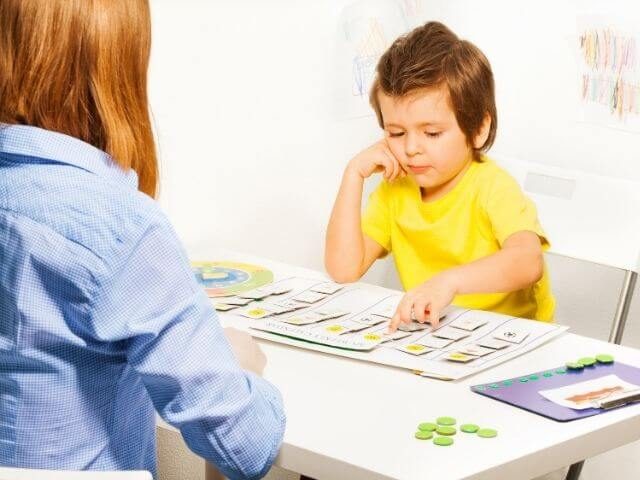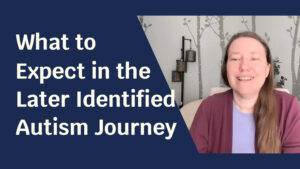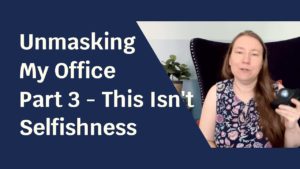A dream
I look forward to the day when we look back on ABA — Applied Behavioral Analysis — as an historical curiosity, the way we look at blood letting, leeches, or lobotomies, and think, “Wow, people actually used to do that?”
The important thing though, is why.
To keep this short(ish), I’ll focus on two things.
Are you sitting down?
When “no” isn’t acceptable
One, not taking no for an answer sets people up to be victims of abuse later.
When you are taught over and over, and over and over, and over, that you cannot refuse, that no matter what you feel, you have to override your own body’s sensations of what is okay in order to do the thing that someone else insists you do, that becomes a deeply ingrained a habit that doesn’t just evaporate when your date wants more than you want to give.
…that doesn’t just evaporate when your date wants more than you want to give.
Or when your partner doesn’t have your best interests at heart. Or when your boss makes a “suggestion” and you hear it as a command. Over and over.
Children are not problems to be fixed
Two, it treats children as problems to be fixed, not as people to be understood. When everything you do or feel becomes a new “goal” to be eradicated, you develop an identity of being broken, unacceptable, not good enough, that who you are is fundamentally wrong. Children with more support needs are especially susceptible to this anyway, but ABA sets this up systematically and relentlessly.
In this light, it may not be surprising that Autistics who have been through ABA have much higher rates of depression and PTSD as adults than Autistics who have not.
Hmm, I’ve changed my mind (couldn’t do that in ABA). Here’s one more point.
It doesn’t seek to understand
Three, ABA values the outsider’s perspective over the insider’s. It views every unwanted behavior as a problem to be trained out of someone, rather than trying to understand the root cause of the behavior. ABA protocol is extremely strict and rigid (and they accuse us of being rigid), and doesn’t ever ask a child why he is doing something, or how it feels, or if it hurts, or what is getting in the way of doing what the trainer wants.
I’ll grant that children often do not have the language to describe how something feels (which, by the way, can be taught), but ABA also isn’t interested in the perspective of the many, many Autistic adults who have been through it and have written copiously in blogs, articles, and books, about what it was like and how it affected them.
If you’re interested in those, here are a few to start with:
- ABA by Unstrange Mind, an Autistic man
- What’s the Big Deal With ABA Therapy? by Autistic Mama, an Autistic woman and mom of 6 neurodivergent kiddos
- Ask an Autistic #5 – What is ABA? a video by Amethyst Schaber, an Autistic woman
- Ido in Autismland, a book by Ido Kedar about his experiences as a non-speaking Autistic boy
- The Influence of Others by Ariane Zurcher, the mother of a non-speaking Autistic girl
- Tackling That Troublesome Issue of ABA and Ethics by Ariane Zurcher
- Why I Left ABA by a former ABA therapist
- Rightful Lives Investigates Behavioural Analysis and Support
What alternatives are there?
Parents often ask me, “Do you have recommendations for something other than ABA?”
Yes! Many! I’m so glad you asked!
To start with, I’d love to have a conversation with you about what your child’s individual strengths and challenges are, and I can recommend resources that are individually tailored to your child and your family.
…and often those challenging behaviors then improve on their own.
But if you’re looking for blanket recommendations, take a look first at the Safe and Sound Protocol (SSP), as it’s hard to go wrong with that. I did the SSP myself and loved it so much I got certified as a provider, and then the first thing I did was to guide all of my closest friends and several family members through it.
The SSP helps resolve a lot of the root causes of the challenging behaviors that ABA tries to train out of people. But because it actually addresses the problem, not the symptom, it is much more effective, and often those challenging behaviors then improve on their own.
Other interventions I recommend are RPM for non-speaking communication training, DIR Floortime for younger children, sensory integration therapies (the Ayers method and the STAR Institute are good examples), Auditory Integration Training (similar to SSP), programs that improve interoceptive awareness (this is something I offer). I’m also intrigued by the RDI method, and have heard good reports, but haven’t tried it yet myself.
Also, take a browse around my resources page for more.
Which of these, and others, are best for your particular child, at this particular time, is something we can talk about together.




